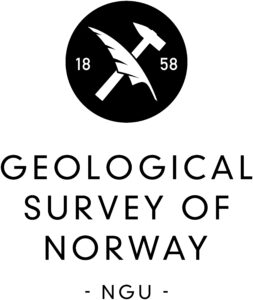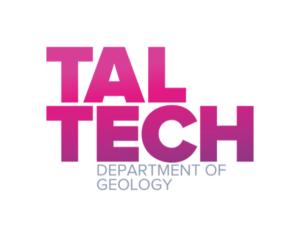Nordic Mineral Deposits Application, Ore Deposits Database and Maps
Essential information on a still under-explored region
Metallogenic and deposit maps and the explanation book for the Fennoscandian part of northern Europe, as well as the Circum Arctic map and related explanation book indicate and describe areas of metal deposits and probable future metal ore discoveries in the region.
The Nordic Ore Deposit Database (NODD) is a comprehensive numeric database on metallic mines, deposits and significant occurrences in the Nordic region (Estonia, Finland, Greenland, Norway and Sweden).
Click Fennoscandian Mineral Deposits Web Map to view detailed information on the deposits and their relationship to lithology and geophysical information in Finland, Norway and Sweden. Note that the printed maps and reports listed below describe the Fennoscandian area. Greenland will be included in new versions of these in the future.
Download:
- Metallogenic Map
- Explanation book for metallogenic map (pdf 63.8 MB)
- Deposit database (Esri geodatabase, Excel table)
- High-resolution deposit map
- Low-resolution deposit map
- Metallic deposits and metallogenic belts in Google Earth
Download:
- Industrial Mineral Deposit Map of the Fennoscandian Shield
- High-resolution deposit map
- Low-resolution deposit map
- Industrial mineral deposits belts in Google Earth
The maps printed before 2022 were compiled in a joint project between the geological surveys of Finland, Norway and Sweden, SC Mineral (Russia), and the Russian Academy of Sciences. The deposit database and all the future maps and reports are products of a joint project between the geological surveys Denmark, Finland, Norway, and Sweden, Ministry of Mineral Resources (Government of Greenland), and Tallinn University of Technology (Estonia).
As of February 24, 2022, the data update regarding Russia has been suspended for the time being. The current database contains information on more than 1500 mines, deposits, and significant occurrences across the region. By country, there is information on:
- 4 deposits in Estonia
- 370 deposits in Finland
- 40 deposits in Greenland
- 258 deposits in Norway
- 854 deposits in Sweden
The Nordic metallogeny includes 143 metallogenic areas or belts. Of these, 49 are completely or mostly in Finland, 42 in Norway, 10 in Greenland, 41 in Sweden, and one in Estonia; these include 24 areas that cross international borders. By metal group, the number of belts dominated by the following metal groups are:
- 45 on ferrous metals (Fe, Mn, Ti, V, Cr)
- 35 on copper, zinc, or lead (Cu, Zn, Pb)
- 20 on precious metals (Ag, Au, PGE)
- 23 on nickel or cobalt (Ni, Co)
- 20 on metals used in modern advanced technologies (Be, Ga, Hf, Li, REE, Sr, Ta, Zr)
Note that nearly all of these areas also contain deposits and occurrences of other metals and minerals.
Of the metal and phosphate mines, 26 are active and, at least, four are in care and maintenance. In addition, there are in the metal and phosphate deposit database 16 large closed mines, 40 large unexploited deposits, and 16 potentially large deposits currently not under mining. Jointly, these five deposit categories include, by their apparently most significant commodity: 15 Fe, 13 Au, 9 Zn, 9 Ti, 8 Cu, 7 Ni, 7 REE, 6 Cr, 6 U, 5 V, 5 PGE, 3 Mo, 2 phosphate, 2 Nb, 2 Li, 1 Ag, 1 Ga, 1 Sc, and 1 Pb deposits. The size ranks are based on the relative value (average metal prices during 2013–2022) of the in-situ commodity contents. Naturally, nearly all of these also contain other extractable commodities in significant volumes. For example, seven of the REE-dominated deposits also are major phosphate, all the large and medium-sized Ni deposits are major to medium-sized cobalt and medium-sized copper, almost all Cu deposits are major to medium sized zinc, all Zn deposits are medium-sized copper resources.
Most of the Nordic metal and mineral deposits contain commodities that are critical and strategic for the European Union. Nordic-oriented fact sheets of these are at:
Critical and strategic metals and minerals in the Nordic countries
The metal deposit database contains information on location, mining history, tonnage and commodity grades with a comment on data quality, geological setting, age, ore mineralogy, style of mineralisation, genetic models, and the primary sources of data. See the explanatory notes (540 KB) for the database. Please, note that the resource information for a deposit in the NODD is not necessarily in accordance with modern industrial standards (e.g., JORC and NI 43-101 codes), as such information only exists for some deposits recently explored or presently under exploitation. The resource calculation code has been indicated in the database for each deposit.
For the critical raw materials, please, note that the criticality for magnesium, silicon and titanium is not about scarcity of mineral resources nor lack of country diversity in raw material mining. Most of the raw materials for these three are mined as industrial minerals, not for metal production, and their mining is globally diversified with abundant resources. For Mg, Si (silicon metal), and Ti, the criticality comes from the actual metal production being concentrated to China.
Examples of end-2022 metal and phosphate deposit data:
- Mines active in Nordic countries
- Closed large metal mines in Nordic countries
- Large unexploited metal deposits in Nordic countries
- Potentially large unexploited deposits in Nordic countries
 |
 |
 |
 |
 |
 |
